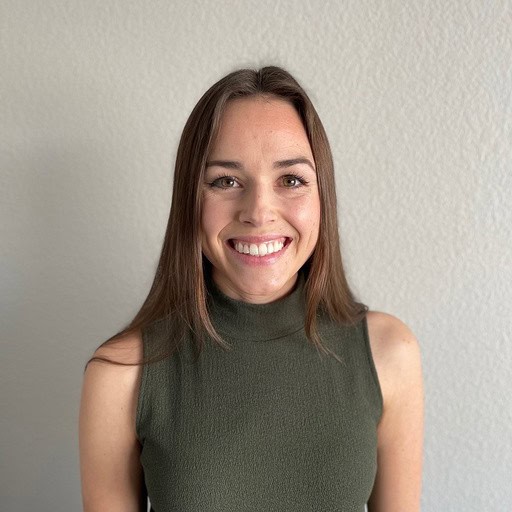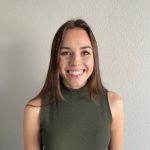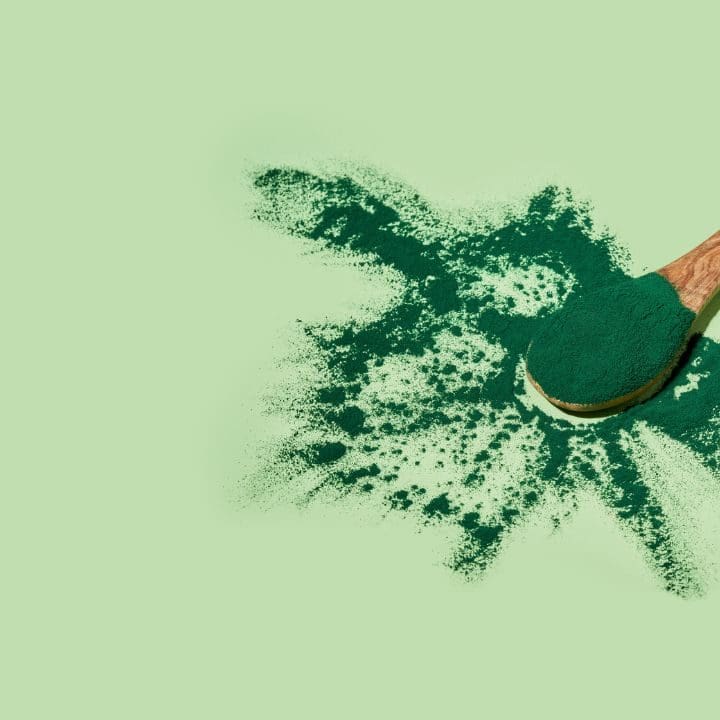
Jordan Hill, MCD, RD, CSSD is a Registered Dietitian and Certified Specialist in Sports Dietetics. She works with athletes of all ages, those struggling with disordered eating, and the general population looking to improve overall health and wellness.

In our fast-paced world, finding time for three meals a day can sometimes feel like a luxury you can’t afford. Meal replacement powders like Ka’Chava offer a convenient solution to this dilemma. Not only can they help keep us full while we’re busy and on the go, but they can also offer additional health benefits, such as providing a nutritional boost, supporting weight management, and helping balance energy levels.
With countless super greens and supplement options available, it’s important to determine whether Ka’Chava lives up to the hype, delivers on its promises, and is the best meal replacement powder for you. In this review, we’ll explore various aspects of Ka’Chava Superfoods, including its health benefits, ingredients, taste, texture, and more. As a registered dietitian, I’ll share my insights alongside perspectives from everyday users.
Ka’Chava Quick Facts
- Price: $69.95 for a 15-day porch ($4.66 per serving), $59.95 with a subscription
- Best for: Those who want protein in their greens
- Nutrition Facts:
- Calories: 240
- Fat: 7 grams
- Carbohydrates: 24 grams
- Protein: 25 grams
- Sugar: 6 grams
- Fiber: 6 grams
- Notable Ingredients: Ka’Chava’s shakes include 85+ ingredients, including a plant-based protein blend, a digestive enzyme blend, functional mushrooms, whole grain oats, pea protein, chia seeds, coconut flower nectar, acai berry, kale, spinach, chlorella, etc.
- Taste: Ka’Chava comes in five flavors: chocolate, vanilla, coconut acai, matcha, and chai. It’s fairly smooth and less gritty than many other protein shakes I’ve tried.
- Claims to Support: Health and wellness, productivity, athletic performance, and weight management.
A Rundown of Ka’Chava
Founded in 2014, Ka’Chava is known for offering fully plant-based products and embracing a clean ingredient list packed with superfoods. Their flagship offering, the all-in-one nutrition shake, contains 25 grams of plant-based protein along with essential vitamins, minerals, greens, probiotics, adaptogens, omegas, and digestive enzymes. Ka’Chava Superfoods is gluten-free, dairy-free, soy-free, and stevia-free, and contains no preservatives, artificial flavors, or sweeteners. In addition to the Whole Body Meal shake, Ka’Chava also offers Snack Bars.
Ka’Chava recognizes that many plant-based superfood powders taste like “twigs and lawn clippings.” As a result, the brand set out with the intention of offering five delicious flavors, aiming to create a shake that tastes delicious, blends smoothly, and maintains a creamy texture when mixed with just water.
In my experience, the shake tastes good. It's flavorful without being overly sweet; it includes coconut nectar and lo han fruit as natural sweeteners. While I did notice clumpiness in my shakes, I found this product to be less chalky compared to many other meal replacement powders I’ve tried.
It’s important to note that Ka’Chava is priced at $4.66 per serving, making it one of the more expensive meal replacement options available. There are numerous other shakes with similar nutrient profiles and ingredient lists available at lower price points.
Ka’Chava is marketed as a meal replacement, offering 240 calories per serving. For context, the average man needs to consume about 2,500 calories per day, while the average woman needs around 2,000 calories, depending on age, weight, and activity level. This means one Ka’Chava shake makes up approximately 10% of the daily caloric needs for men and 8% for women, which, in my opinion, is an insufficient meal replacement.
What I Liked:
- 85+ plant-based ingredients, many of which are organic
- Gluten-free, soy-free, and dairy-free
- Third-party tested
- Available in five flavors, relatively tasty
What I Disliked:
- The “Love It” guarantee, only allows you to return products for store credit, not a refund
- No free shipping (must purchase 2+ pouches to get free shipping).
- Low in calories for a meal-replacement shake
- Contains fillers, which may affect individuals with digestive issues
- Relatively expensive
Health Targets
Ka'Chava claims to offer nine different health benefits, from immune support and energy production to joint support and hair and skin health. Let’s take a closer look at some of their biggest claims regarding nutrition intake, weight management, and athletic performance to see if Ka’Chava delivers on its promises.

Boosts Nutrition Intake
Ka'Chava is packed with a wide range of essential nutrients, offering protein, fiber, greens, omega-3s, probiotics, adaptogens, antioxidants, and 26 vitamins and minerals. With 25 grams of protein per serving (on par with your average plant-based protein powder), 24 grams of carbohydrates (6 grams from fiber), and 7 grams of fat, it also covers key macronutrients. Plus, the whole-food ingredients provide a rich source of micronutrients, delivering anywhere from 6% to 250% of your daily needs for vitamins A, C, B12, zinc, and magnesium.
For those with busy lifestyles or specific dietary needs—such as vegans—Ka'Chava can be an easy way to supplement daily nutrition. However, while it’s marketed as a meal replacement or “all-in-one ultimate whole body meal,” its 240 calories per serving fall short of being a complete meal substitute. In reality, Ka'Chava only accounts for about 8-10% of the recommended daily caloric intake, making it a better option as a healthy snack rather than a full meal replacement.
Helps Maintain a Healthy Weight
Research on meal replacement shakes, which are often higher in protein and lower in fat, indicates they can be effective in aiding weight management efforts. For instance, one study found that combining meal replacement shakes with a healthy diet and diet-support programs for a single year can be particularly effective in helping people reach their weight management goals.
However, this research applies to meal replacement shakes generally, not Ka’Chava specifically. On its website, Ka’Chava discusses how its meal replacement powder can support a healthy body weight.
One of the brand's recommendations is to "replace up to two meals per day with Ka'Chava to support your weight loss efforts." However, as mentioned earlier, this is not a safe approach, as 240 calories per serving is insufficient as a proper meal replacement.
Ka'Chava also highlights the 25 grams of protein in each serving, sourced from pea protein, brown rice, sacha inchi, amaranth, and quinoa. This protein blend promotes satiety, helping to curb food cravings and reduce snacking throughout the day. Additionally, the 6 grams of fiber per serving, from whole grain oats, chia, flax, and chicory root, further supports fullness by remaining in the digestive system longer than refined carbohydrates and sugars.
Supports Athletic Performance
Ka’Chava also claims that it can support athletic performance by contributing to energy balance and supporting muscle health and wellness.
Ka’Chava supports energy levels through a combination of B-complex vitamins, iron, vitamin C, phosphorus, and magnesium. The B vitamins help convert carbohydrates, fats, and proteins into usable energy, while vitamin B12 and iron assist in oxygen transport, aiding with fatigue. Phosphorus and magnesium also help with the production of ATP, the molecule your body uses to store and release energy, helping to sustain balanced energy throughout the day.
Ka'Chava supports muscle health and wellness through its iron content and inclusion of electrolytes, vitamins C, E, and magnesium. Iron helps transport oxygen to muscles via myoglobin, ensuring they receive the oxygen needed during intense physical activity. Electrolytes such as magnesium, calcium, and sodium aid in muscle contraction and maintaining fluid balance, both critical for proper muscle function. Additionally, vitamins C and E act as antioxidants, protecting muscle cells from oxidative stress.
Formula

Ka’Chava, like many other superfood powders, does not specify the amounts of each ingredient it contains. Instead, it uses “proprietary blends” to group its ingredients, which obscures how much of each nutrient you’re actually getting. This is significant because many ingredients need to be consumed in specific amounts to deliver their promised health benefits.
For example, maca root is included in Ka’Chava’s adaptogen blend. Research suggests that taking 3.5 grams of maca root daily for six weeks can help balance mood and support mental health. However, there’s no evidence that these benefits occur at lower doses. Since Ka’Chava’s total adaptogen blend is only 1.2 mg, it’s unlikely that users will experience the claimed benefits when consuming this product.
Another important aspect of Ka’Chava’s formula is that many ingredients are organic, which could contribute to its premium price. The powder is gluten-free, dairy-free, and soy-free, with no added sugar, artificial sweeteners, or flavors. However, it does contain nuts (tree nuts and sesame) and traces of caffeine.
Ka’Chava also contains gums, specifically guar gum and xanthan gum. I was disappointed to see these fillers on the ingredient list for a couple of reasons: they occupy space that could have been used for superfoods and can cause side effects and digestive issues for some individuals.
Pricing
Ka’Chava can be purchased online, on Amazon, or through its official website, as well as at popular retailers like Target and Walmart.
A bag of Ka’Chava contains 15 servings and costs $69.95, which breaks down to $4.66 per serving, making it one of the most expensive meal replacement powders on the market.
Customers can opt for a subscription to save $10, reducing the price to $3.99 per serving. The “subscribe and save guarantee” includes pre-shipment reminders and allows customers to change their flavors or quantities. Subscribers will receive a monthly delivery and can cancel their subscription at any time. Shipping costs $7.95 unless you spend over $99 on Ka’Chava’s website.
Ka’Chava also offers a “Love It” guarantee. Customers can try any product for 30 days, and if they don’t love it, they can return it for a new flavor or store credit. While this is a nice option for those who don’t enjoy a particular flavor, it does not address situations where customers experience adverse reactions to Ka’Chava or would like their money back.
Taste and Texture
Though taste and texture may not be top priorities for everyone when choosing a superfood powder, I find them crucial for making a supplement part of my daily routine. If I don’t enjoy the experience of consuming it, I’m unlikely to stick with it long-term. Since taste and texture are subjective, I've included both my own thoughts and those of other customers from various Ka'Chava reviews.
Taste
Ka’Chava Superfoods comes in five flavors: Chocolate, Vanilla, Coconut Acai, Chai, and Matcha. The blend is naturally sweetened with coconut nectar and lo han fruit extract, which gives these shakes a tasty, subtly sweet flavor. I sampled the matcha and coconut acai flavors and enjoyed both.
Some customers, like me, had positive experiences with Ka’Chava’s flavors. One customer wrote, “The chocolate flavor tastes delicious, not too sweet, and no weird aftertaste from fake sugar. ”
Another said, “I use vanilla Ka’Chava every day, but I only put it with my fruit smoothie and personally love it. I can’t have my smoothie without it anymore.”
However, others were less satisfied. One reviewer shared, “It doesn’t taste chocolatey at all, and it’s pretty gross.”
Another noted, “The taste isn’t great—it’s not horrible, but it’s definitely not great. It's like a literal whisper of vanilla and then an aftertaste of mushroom, so either get chocolate or be ready to add something for flavor.”
Texture
As for Ka’Chava’s texture, I was a little more disappointed. While my shake was less chalky than other meal replacement powders I’ve tried, it still felt grainy and clumpy. I found that many other customers had similar experiences.
One user wrote, “I bought the coconut acai, and yes, I can definitely taste the coconut, but it’s grainy and ends up leaving my throat a bit scratchy.
Again, personal preferences vary. You may need to experiment with Ka’Chava’s flavors to find one you absolutely love and try mixing them with different liquids, like water, milk, or smoothies, to find a consistency you enjoy.
Customer Reviews
After combing through Ka’Chava’s customer reviews on various platforms, several themes emerged. Beyond the commentary on taste and texture (which can be viewed above), here are some recurring topics that surfaced:
Satiety
As mentioned previously, I wouldn’t recommend using Ka’Chava’s 240-calorie serving smoothie as a full meal; it’s better suited as a healthy snack alternative. However, it was interesting to hear how others experienced this product in terms of satiety.
Many customers who tried Ka’Chava reported feeling hungry after their meal replacement shake. One customer wrote, “The biggest issue that I have is that it does not keep you full, which is the point of a meal replacement.”
Another noted, “I was hoping that the shake would make me feel full for a while, but it doesn’t last very long."
On the other hand, a few users claimed that the shake served as an adequate breakfast. One reviewer shared, “It leaves me feeling full until lunch, and sometimes I’m not even hungry by lunchtime.”
Price
Many customers also commented on the product's premium price. While some seemed to enjoy the product, from the five delicious flavors to the inclusion of organic whole foods, they felt it was too expensive compared to more affordable alternatives on the market.
One customer wrote, “It tastes great, but is too expensive when not on sale…while this tastes better than the Garden of Life meal replacement powder I have gotten many times in the past, it’s not worth it for nearly double the price.
Another wrote, “Way too expensive for me to continue using on a regular basis. Now using another more affordable brand.”
Others felt that for this premium price, they needed to get more out of the powder, but they weren’t experiencing the promised benefits. One user stated, “It works okay as a meal replacement, but I didn’t experience the boost in energy or well-being some folks have claimed.”
Side Effects
Lastly, a few users commented on unexpected side effects when using the meal replacement powder, such as bloating and constipation. I saw several comments related to spiked glucose levels, which I wanted to flag for others.
“I cannot eat sugar and it has several grams of added sugar. Love the whole concept and it’s really good, but I cannot drink it without spiking glucose,” one user wrote.
Another shared, “I still don’t feel too great after drinking it sometimes. I suspect it's spiking my blood sugar because I feel tired a lot of times after having it as my only meal (replacement).”
Is Ka’Chava Worth It?
Ka’Chava Superfoods is a worthwhile consideration for those seeking a protein-packed superfood powder. This pleasant-tasting blend is filled with 85+ ingredients, including organic fruits and vegetables, superfoods, probiotics, digestive enzymes, adaptogens, and more. However, the efficacy of individual ingredients is questionable due to the sheer number packed into each serving.
For those primarily looking to incorporate greens and superfoods into their diet, it might be worth exploring other greens powder options like Live it Up Super Greens or Primal Greens.
Additionally, it’s important to note that Ka’Chava contains nuts and trace amounts of caffeine, which may not suit everyone’s dietary needs. With only 240 calories per serving, I wouldn’t recommend using it as a full meal replacement, despite its marketing. Furthermore, at approximately $4.66 per serving, it is on the pricier side compared to other brands that offer similar benefits.
Ultimately, each person’s health concerns and goals vary. While I wouldn’t typically recommend Ka’Chava to my clients, it could be a good fit for some.
FAQs about Ka’Chava
Find answers to common questions about Ka’Chava and its ingredients, benefits, and more.
What are the negative side effects of Ka’Chava?
Some users may experience issues with gut health or digestion, due to the high fiber content in Ka’Chava, while others have reported glucose level spikes. Individuals with specific food sensitivities or allergies should check the ingredient list, as it contains nuts and caffeine. Starting with a smaller serving can help reduce discomfort, and consulting a professional for health advice before beginning any new supplement is advisable.
Does Ka’Chava really help you lose weight?
Ka’Chava can support weight management as part of a balanced diet and active lifestyle. Its high fiber and protein content promote fullness, helping stave off cravings and reduce snacking. However, individual results can vary based on diet, exercise, and metabolism.
Is Ka’Chava sold in stores?
Ka’Chava can be found at some popular retailers like Walmart and Target. Additionally, it is available for purchase online through Amazon and Ka’Chava’s official website.
Is Ka’Chava FDA-approved?
Ka’Chava, like all dietary supplements, does not require FDA approval before sale. However, the FDA regulates dietary supplements to ensure safety and accurate labeling. Ka’Chava claims that its products are produced in a facility that is FDA-registered and meets current good manufacturing practices (cGMP). They also claim to conduct physical, chemical, and microbiological tests on each batch before release.
Why is Ka’Chava so expensive?
One reason Ka’Chava may be priced higher is the large number of ingredients included in the blend, many of which are organic. However, users may find that similar products offer comparable health benefits.
Jordan Hill, MCD, RD, CSSD is a Registered Dietitian and Certified Specialist in Sports Dietetics. She works with athletes of all ages, those struggling with disordered eating, and the general population looking to improve overall health and wellness.
Jordan Hill, MCD, RD, CSSD
Jordan Hill, MCD, RD, CSSDis a Registered Dietitian and Certified Specialist in Sports Dietetics. She works with athletes of all ages, those struggling with disordered eating, and the general population looking to improve overall health and wellness.




Comments
No Comments